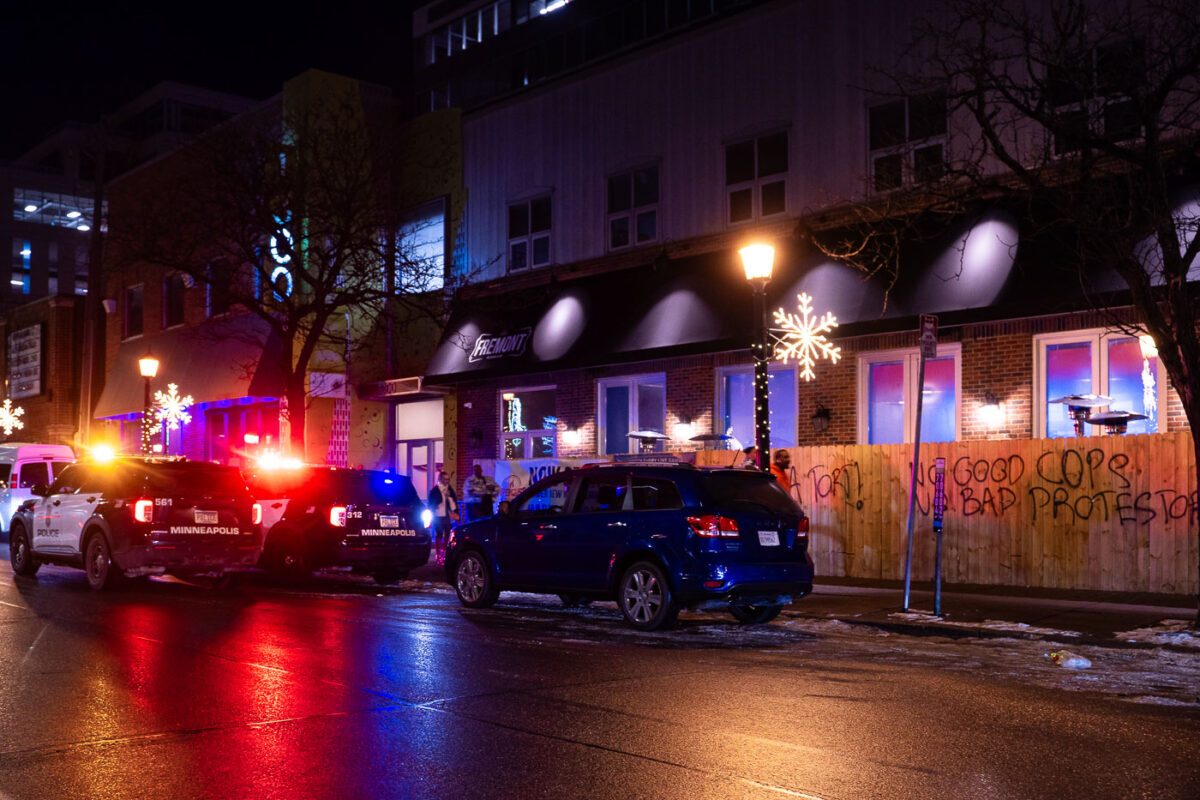
Fire House bar on Lagoon Ave in Uptown Minneapolis
Minneapolis Police parked outside Fire House bar/restaurant in Uptown Minneapolis.
Graffiti that reads “No Good cops. No bad protesters”
Explore photos and posts tagged Graffiti.

Minneapolis Police parked outside Fire House bar/restaurant in Uptown Minneapolis.
Graffiti that reads “No Good cops. No bad protesters”
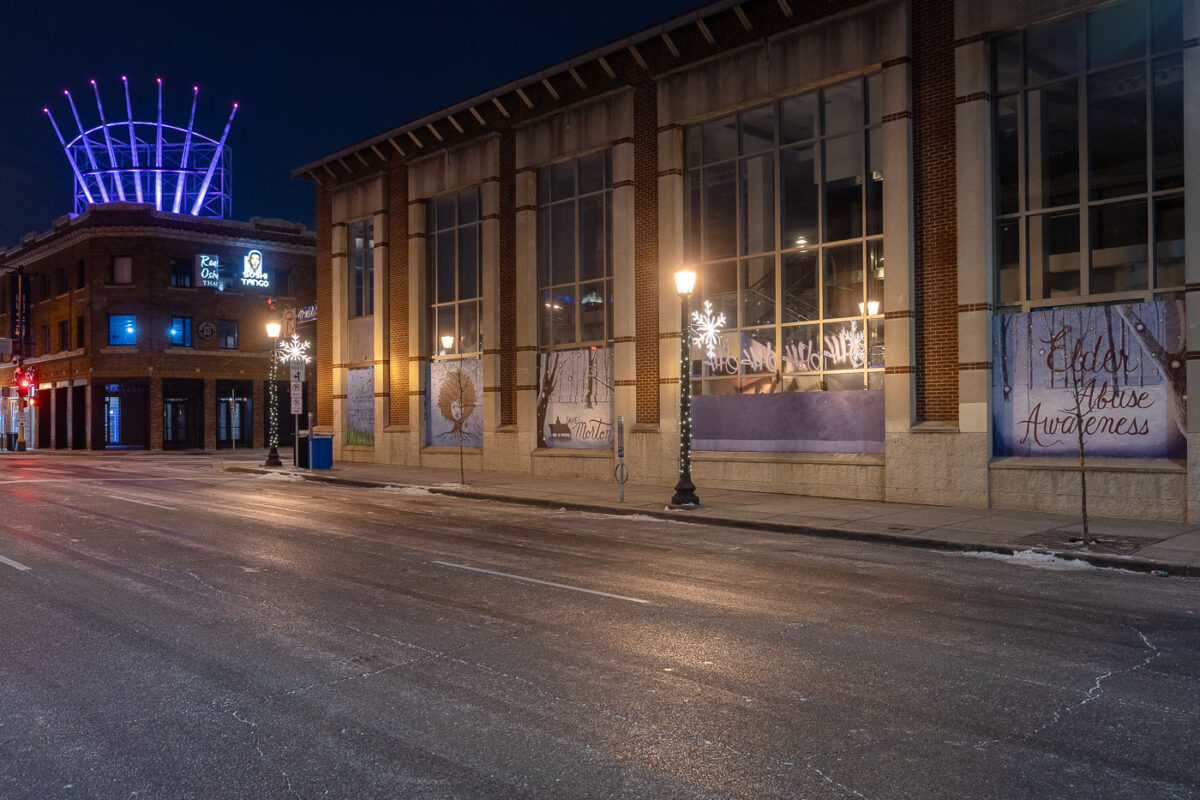
Boards on the former Victoria Secret and Gap building at Lake and Hennepin.
Until recently, the building still had all of the original boards from June 2020 that went up following the May 25, 2020 murder of George Floyd.
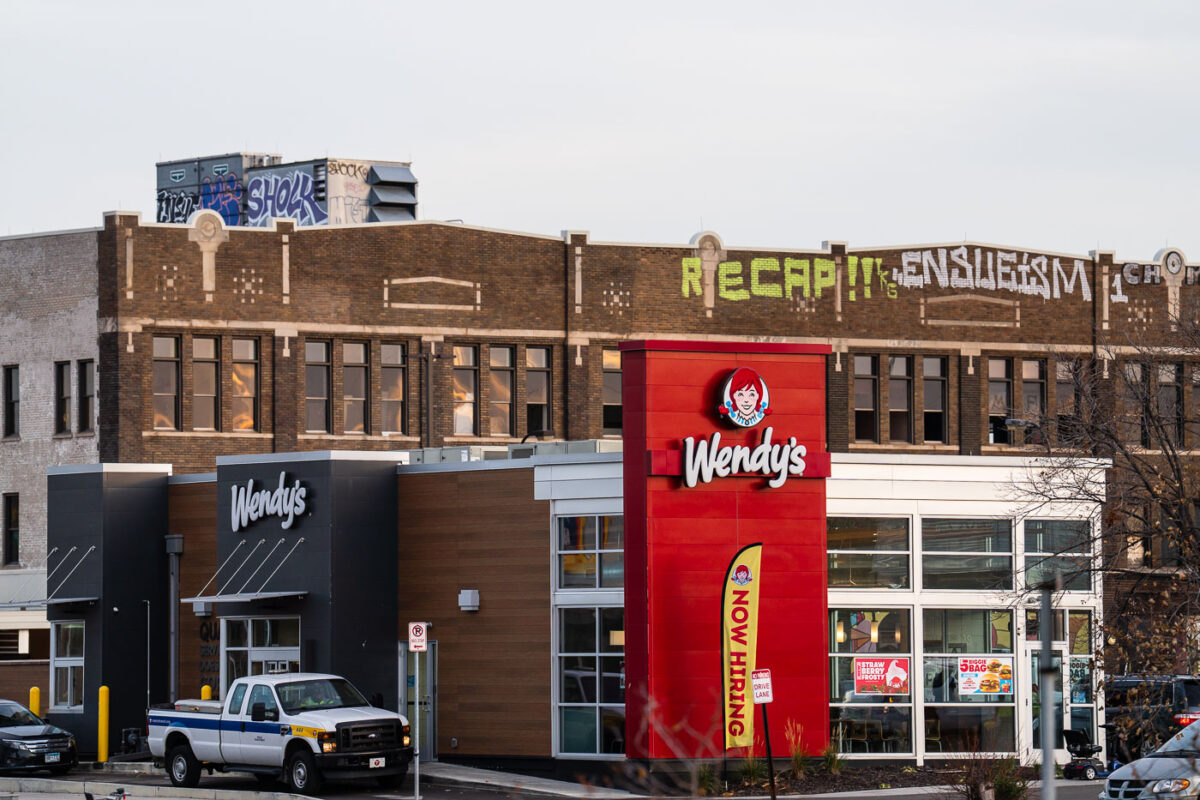
A newly built Wendy's in Minneapolis. The restaurant was burned down in May 2020 during riots following the murder of George Floyd.
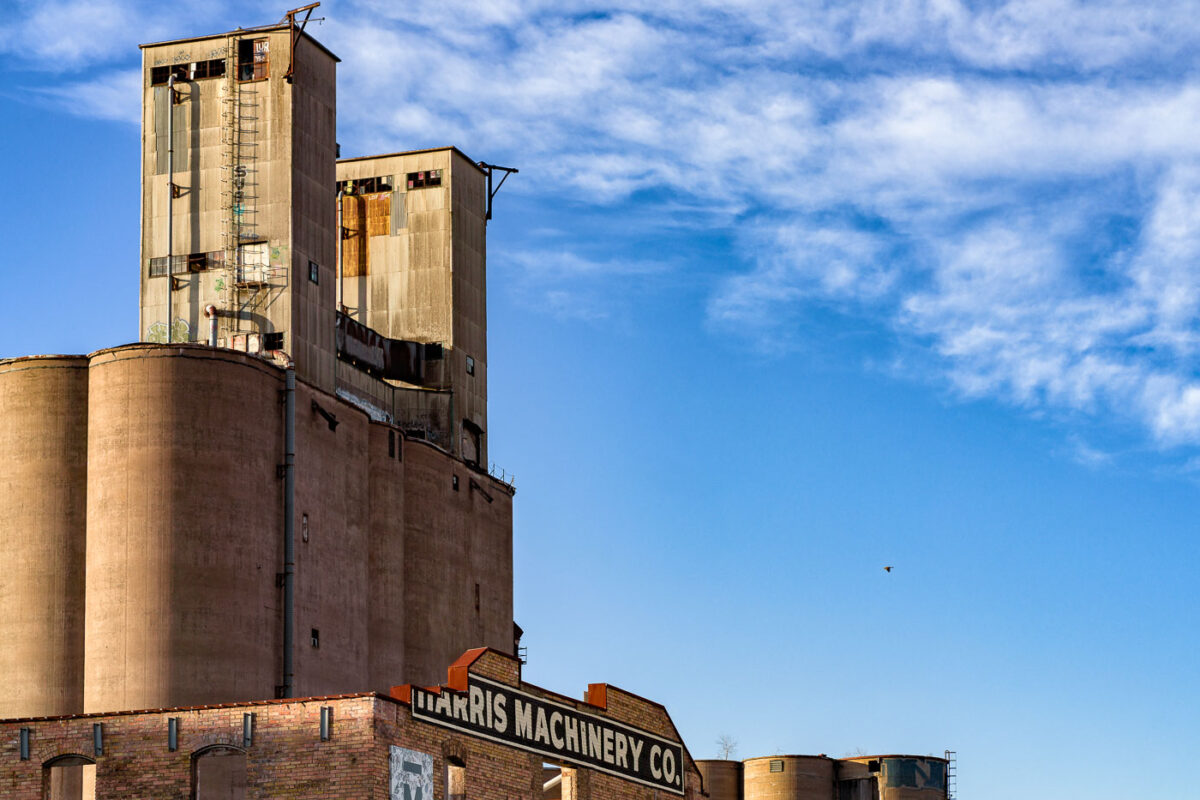
The aging ADM grain elevator rises over the Harris Machinery Co. building in Minneapolis, a reminder of the city’s long industrial relationship with grain milling and riverfront commerce. These concrete storage silos and metal-clad headhouses were once central to moving Midwestern grain through the milling district, part of an infrastructure network that fueled Minneapolis’s identity as the “Flour Milling Capital of the World.” Harris Machinery Co., a longtime supplier of industrial equipment, occupies the foreground, its brick façade contrasting with the weathered surfaces of the towering elevator. The structures together illustrate the layered industrial history of the city’s working riverfront.
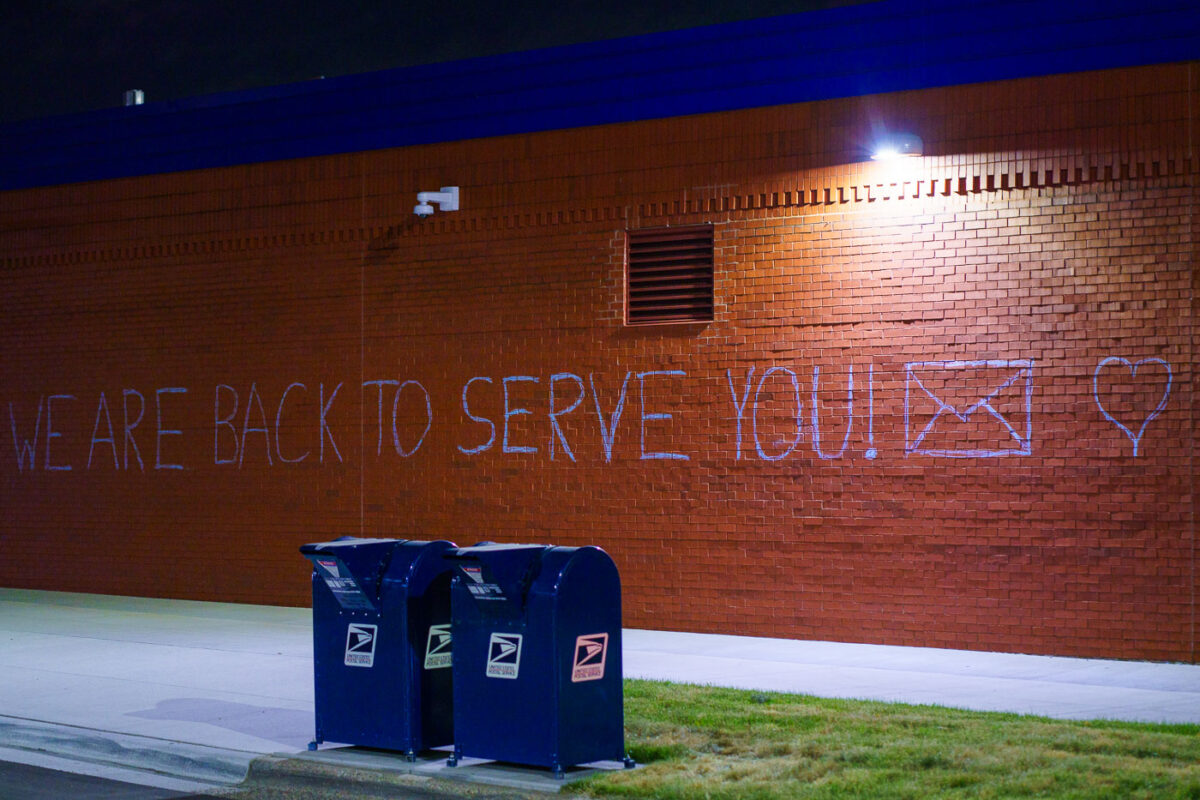
"We are back to serve you!" written on the side of the newly opened Lake Street Station. The post office was burned down during protests that followed the May 25th, 2020 murder of George Floyd.
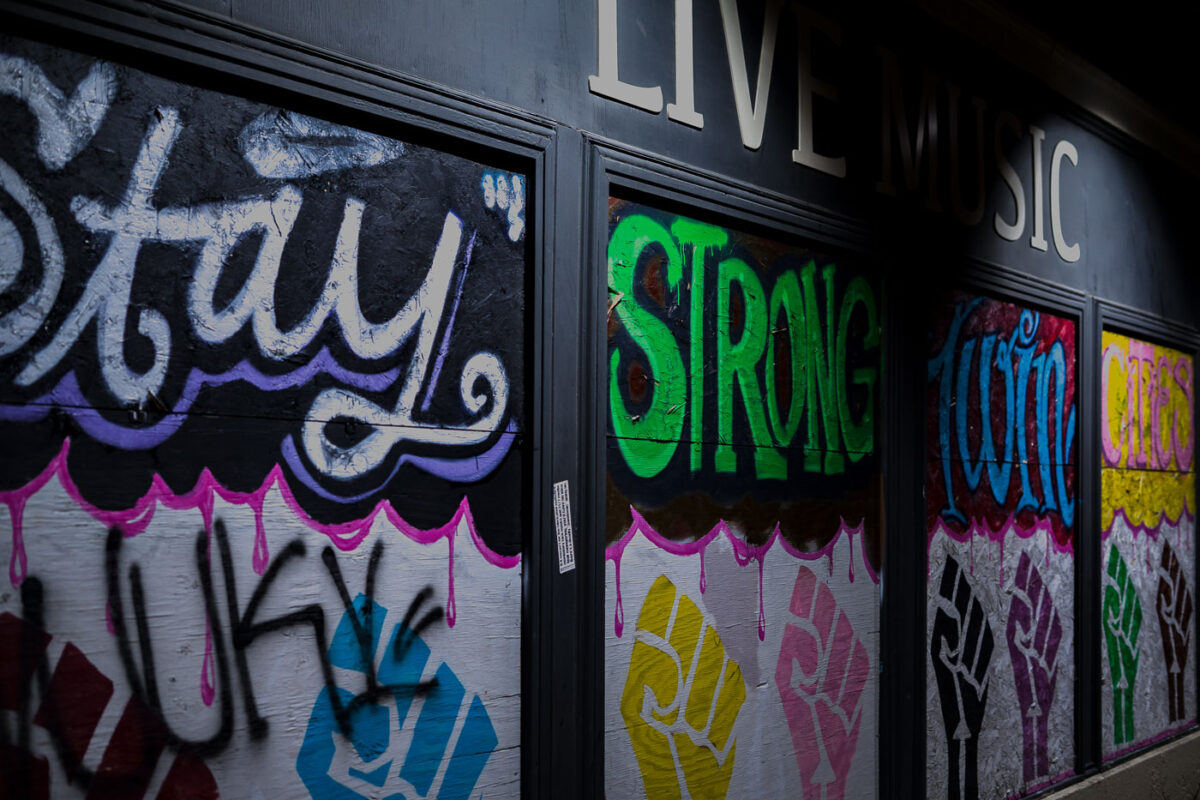
Painted boards on Mortimer's on Lyndale Avenue in Minneapolis.
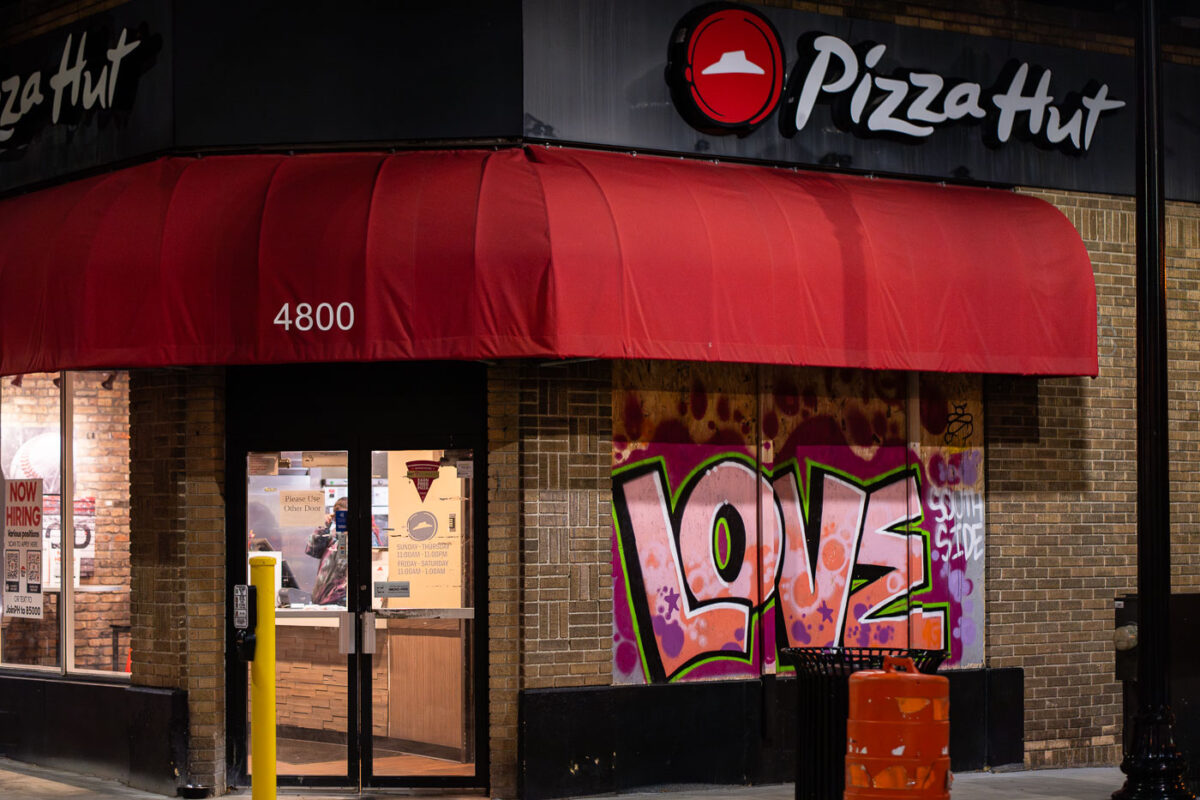
Pizza Hut on Chicago Avenue in Minneapolis.
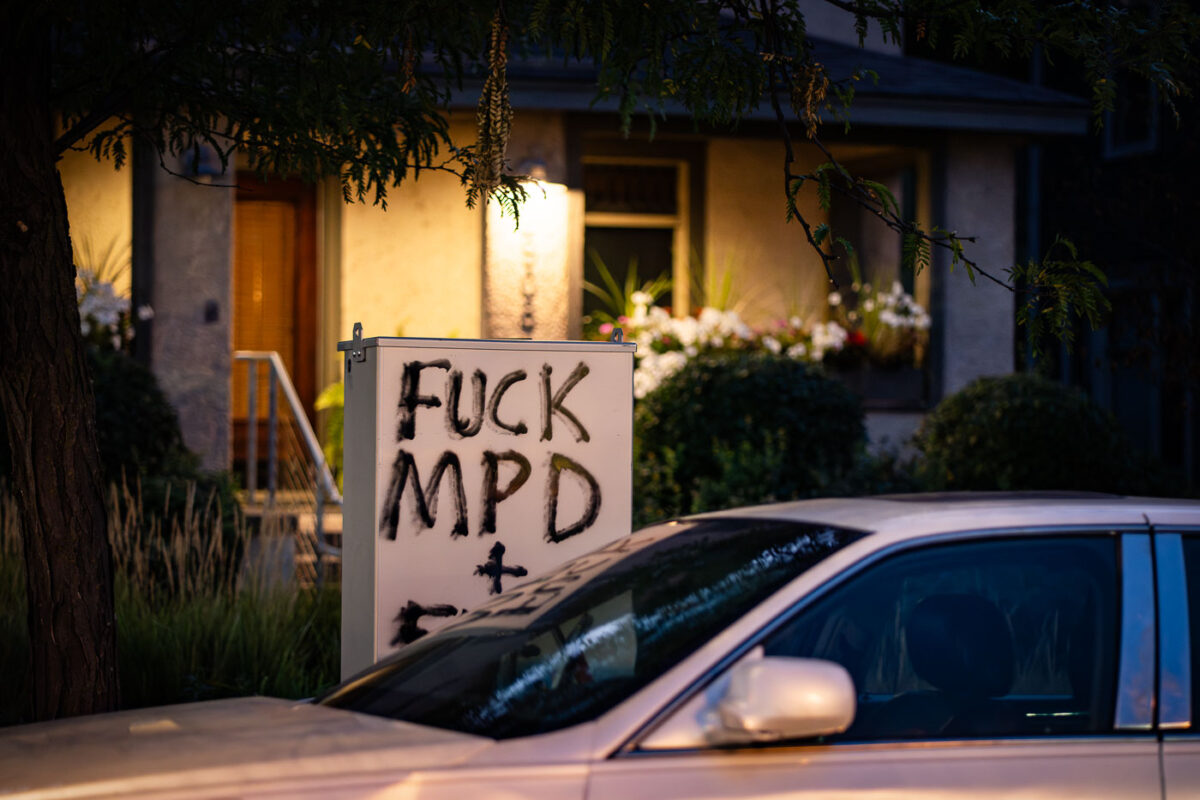
Graffiti on an electrical box in Uptown Minneapolis reading “FUCK MPD”
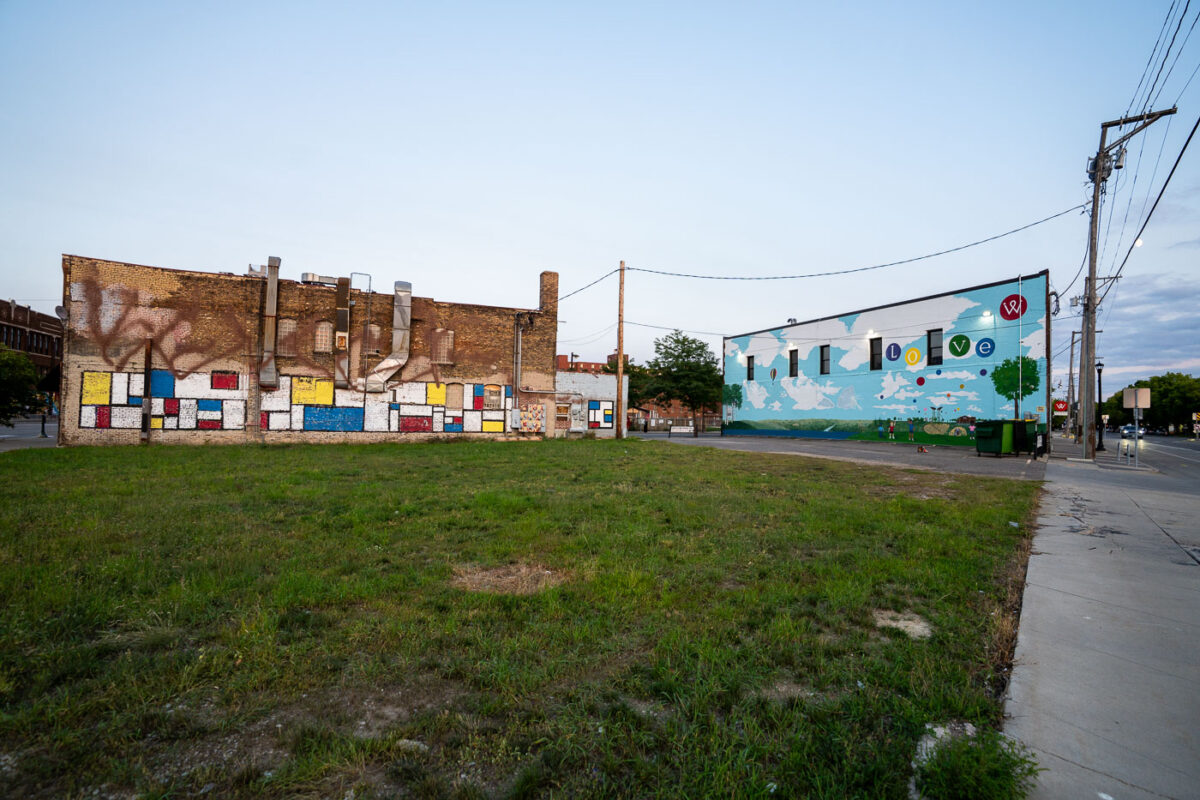
The location of the Minnehaha Liquors building that burned down during riots over the murder of George Floyd.
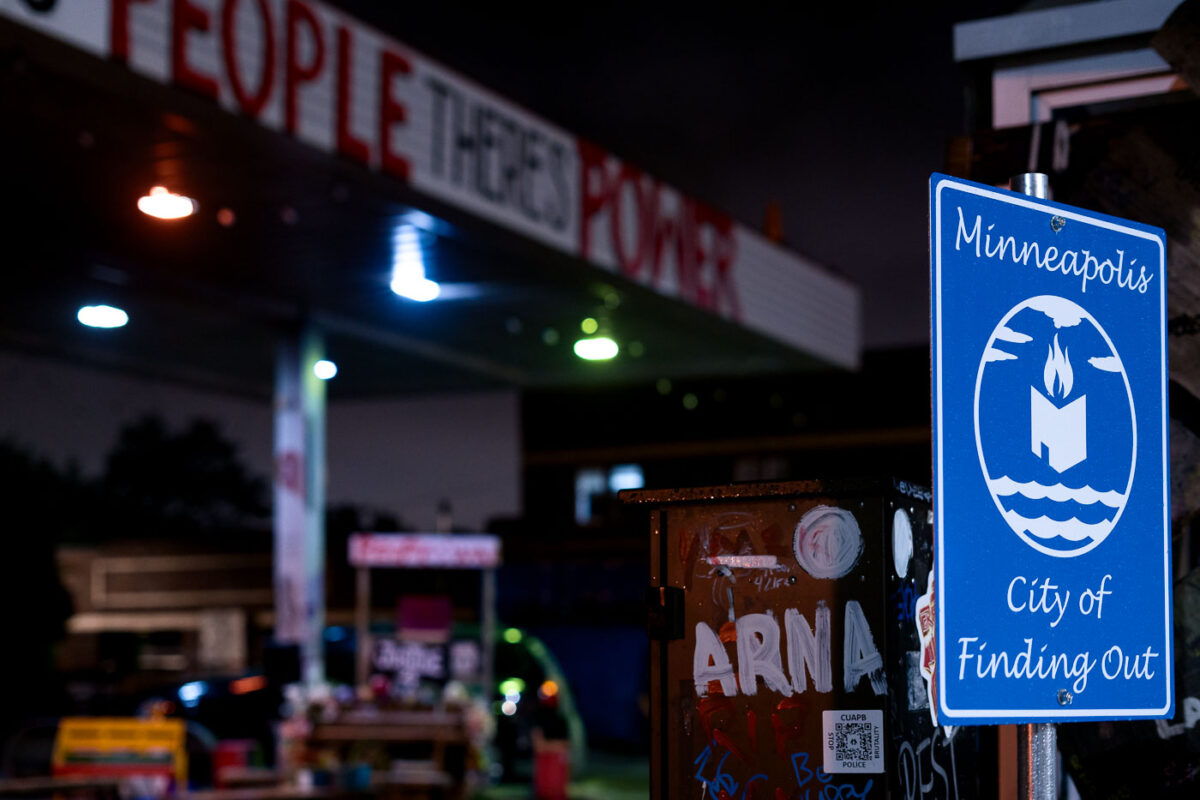
A sign at George Floyd Square reading "Minneapolis City of Finding Out”. The area has been a protest since the May 25, 2020 murder of George Floyd.

A mural in South Minneapolis with a mural that reads "White Silence is Violence”.
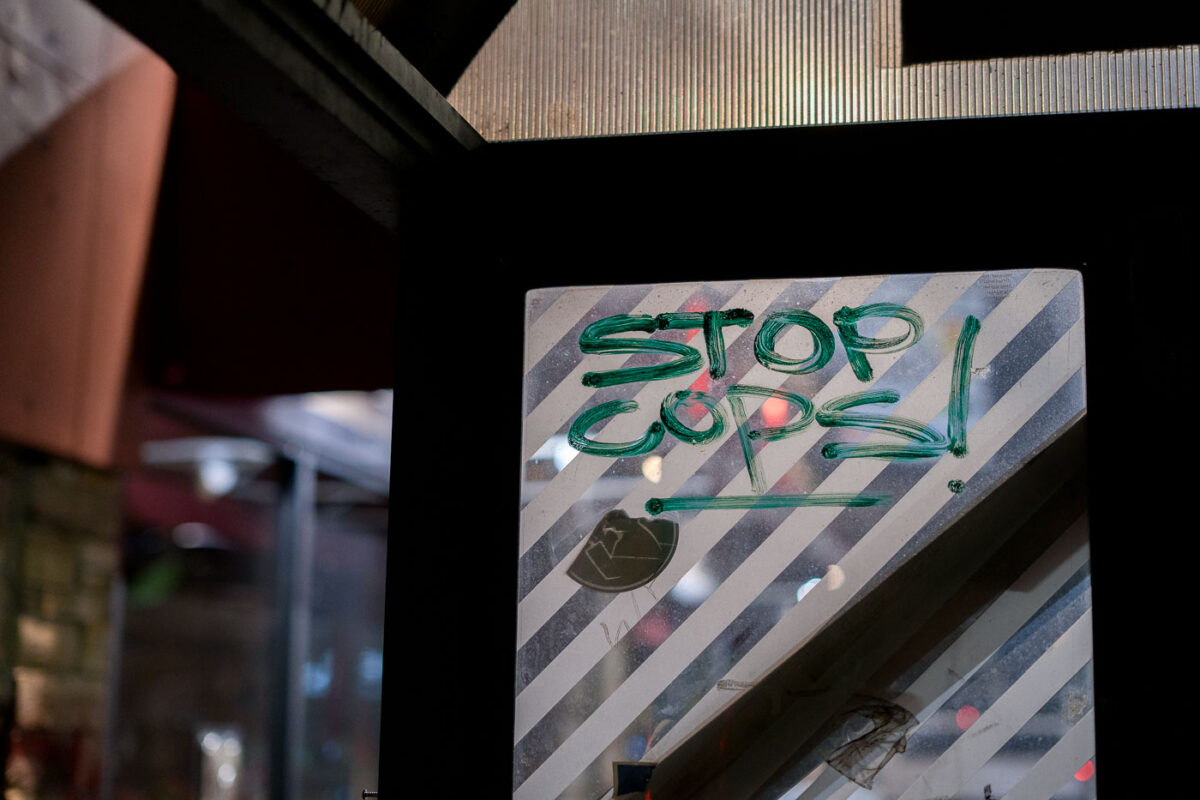
Stop Cops! written on a former bus shelter at George Floyd Square.

A conversation on the Martin Olav Sabo in Minneapolis.

A couple walk across Lake Street in front of a parking garage with graffiti that reads “Deona Marie” “161”. The area has been a place of protest since the June 2021 killing of Winston Smith.
Smith was killed by a federal task force serving a warrant. Protester Deona Marie was killed ten days later when a man drove his vehicle through barricades killing her.

MPD HQ written on a porta potty.
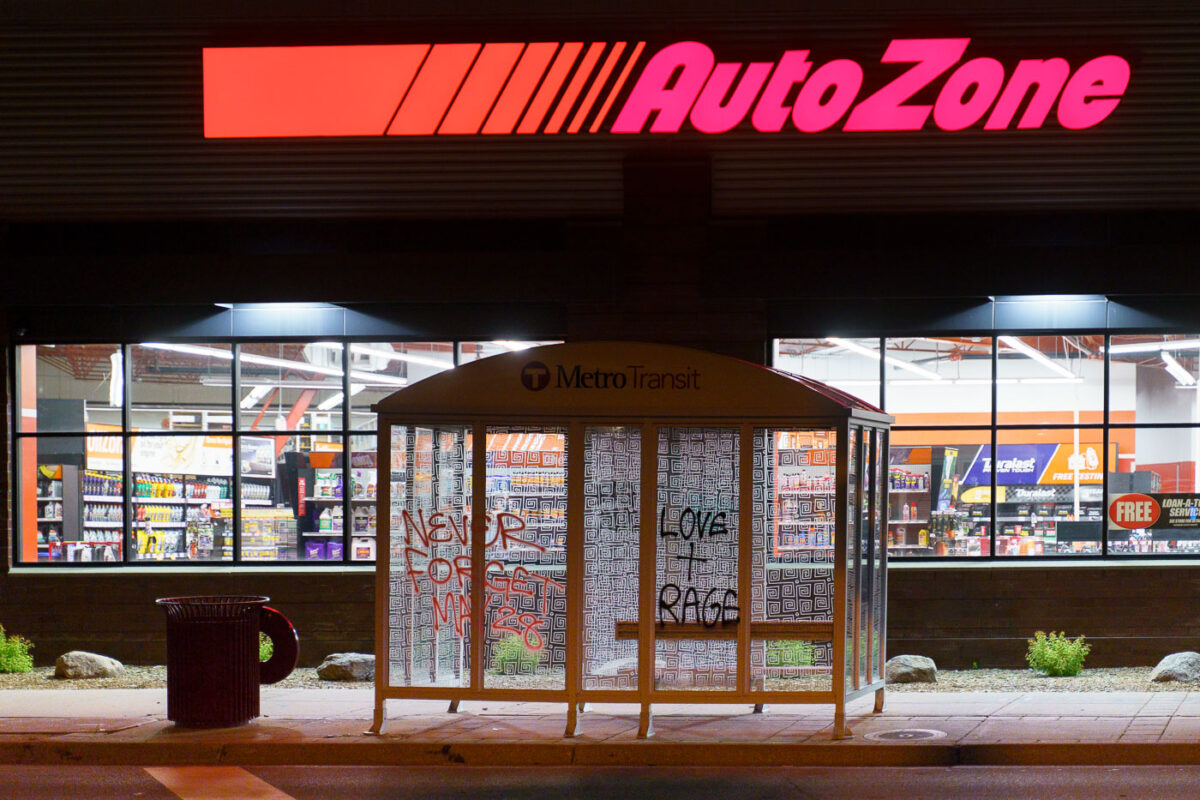
Graffiti on a bus shelter across from the Minneapolis police third precinct on the 2nd anniversary of the Minneapolis police station being burned following the murder of George Floyd.

Minneapolis as seen from the Cedar Lake Trail.
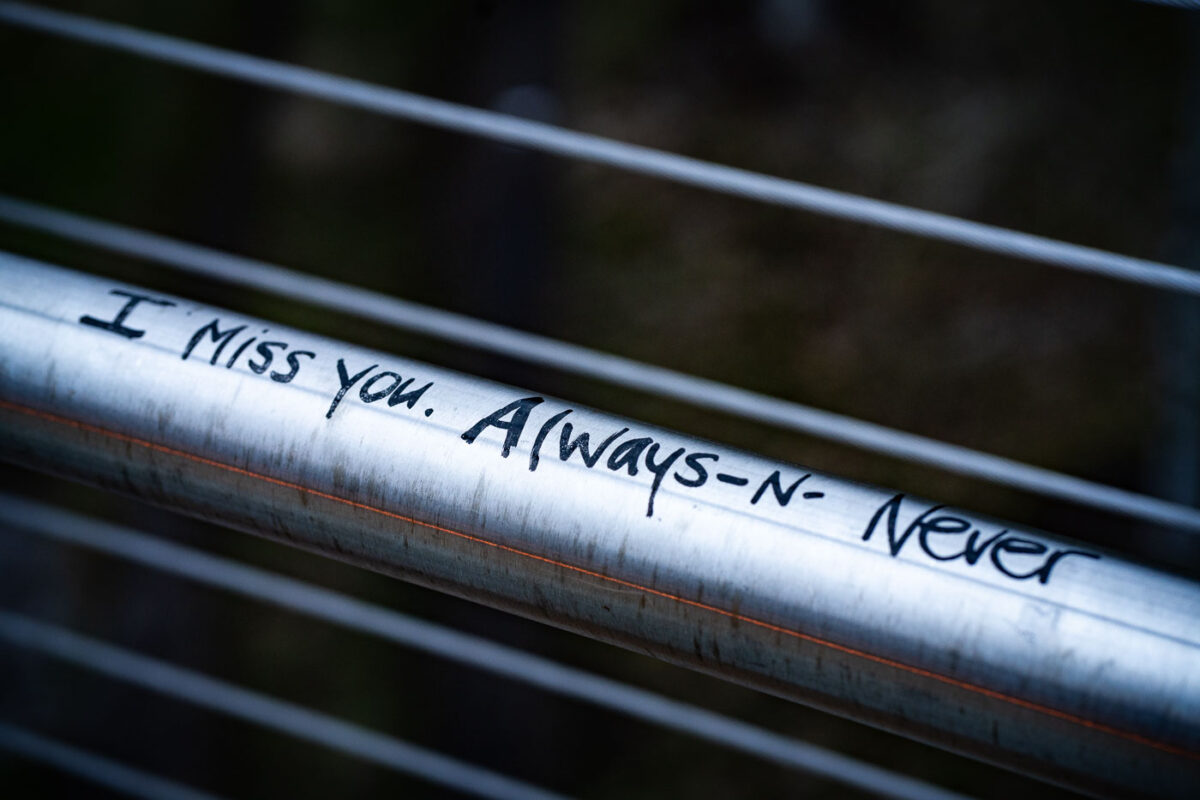
Graffiti found on the Martin Olav Sabo bridge that reads: “I miss you. Always -N- Never.
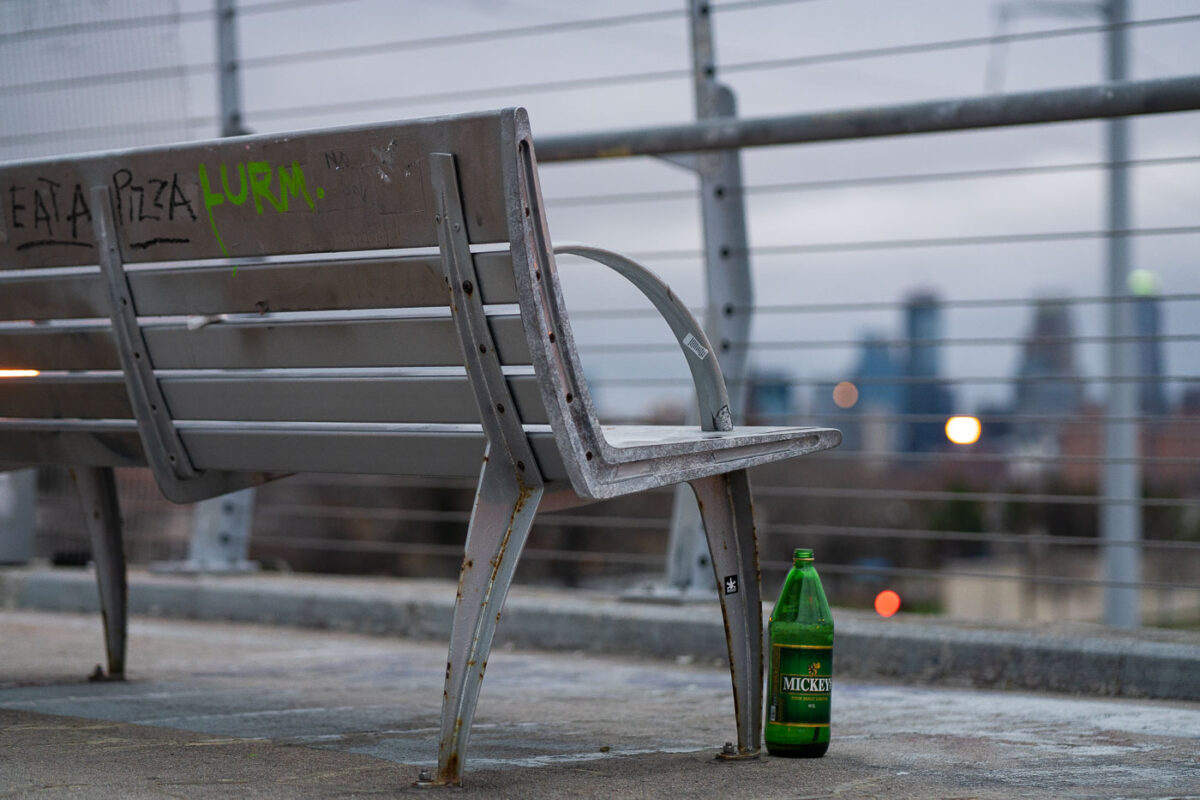
A weathered metal bench sits along one of Minneapolis’s elevated pedestrian and bicycle bridges, its frame showing rust from years of exposure to winter salt and freeze–thaw cycles. The skyline appears in the distance—soft, cool, and out of focus—giving the bench a quiet vantage point over the city. Graffiti tags on the slats and a discarded green Mickey’s bottle beneath the seat add small traces of everyday use, hinting at how these bridges serve not just as transportation corridors but as informal social spaces.
Many of the city’s long-span pedestrian bridges, especially those built over rail corridors and highways, were added during the late 20th century to connect neighborhoods divided by infrastructure. Despite their utilitarian design, they often become familiar landmarks for runners, cyclists, and residents crossing between neighborhoods at dusk, when the muted lights of downtown begin to glow against the evening sky.
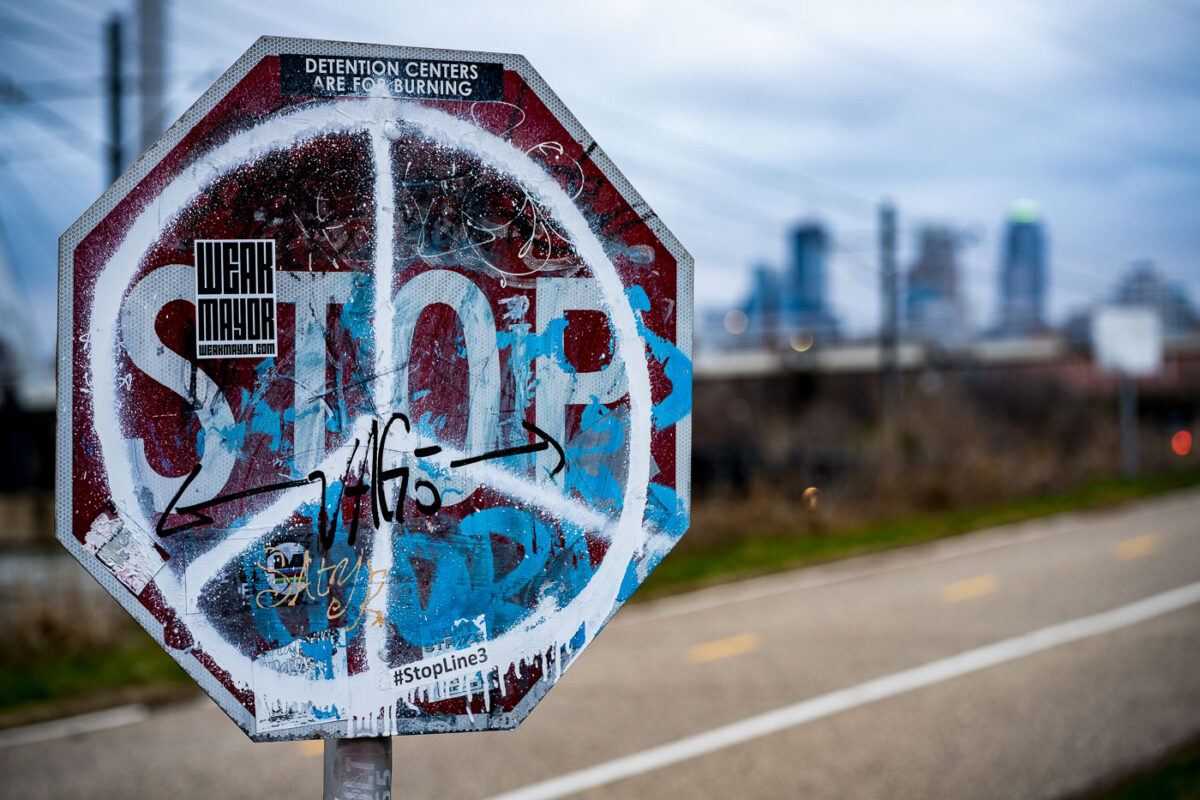
Weak Mayor, Stop Line 3, Detention Centers are for burning stickers on a stop sign in Minneapolis.